Related Research Articles

Earl of Chesterfield, in the County of Derby, was a title in the Peerage of England. It was created in 1628 for Philip Stanhope, 1st Baron Stanhope. He had been created Baron Stanhope, of Shelford in the County of Nottingham, in 1616, also in the Peerage of England. Stanhope's youngest son, the Hon. Alexander Stanhope, was the father of James Stanhope, 1st Earl Stanhope, while his half-brother Sir John Stanhope of Elvaston was the great-grandfather of William Stanhope, 1st Earl of Harrington.

Earl of Holland was a title in the Peerage of England. It was created in 1624 for Henry Rich, 1st Baron Kensington. He was the younger son of Robert Rich, 1st Earl of Warwick, and had already been created Baron Kensington in 1623, also in the Peerage of England, having married Isabelle Cope, daughter and sole heiress of Sir Walter Cope (c.1553-1614), of Cope Castle in Kensington, Middlesex. His eldest son, the second Earl, succeeded his first cousin as fifth Earl of Warwick in 1673. All the titles became extinct on the death of the eighth Earl of Warwick and fifth Earl of Holland in 1759.
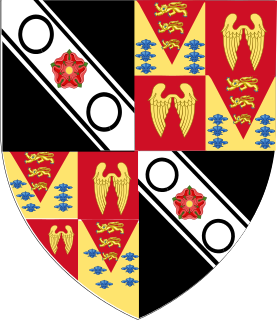
The titles of Earl of Hertford and Marquess of Hertford have been created several times in the peerages of England and Great Britain.
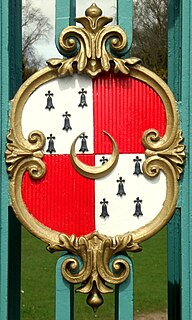
Earl of Harrington is a title in the Peerage of Great Britain that was created in 1742.
Earl of Meath is a title in the Peerage of Ireland created in 1627 and held by the head of the Brabazon family. This family descends from Sir Edward Brabazon, who represented County Wicklow in the Irish House of Commons and served as High Sheriff of Staffordshire in 1606. In 1616 he was raised to the Peerage of Ireland as Baron Ardee. He was succeeded by his eldest son, the second Baron. In 1627 he was created Earl of Meath in the Peerage of Ireland, with remainder to his younger brother the Hon. Sir Anthony Brabazon. Lord Meath was succeeded by his son, the second Earl. His grandson, the fourth Earl, served as Lord-Lieutenant of Dublin and of Kildare. His wife Dorothy Stopford, daughter of James Stopford and Mary Forth, was a close friend of Jonathan Swift. He died childless and was succeeded by his younger brother, the fifth Earl. He was also Lord-Lieutenant of Dublin. Lord Meath married the Hon. Juliana, daughter of Patrick Chaworth, 3rd and last Viscount Chaworth.
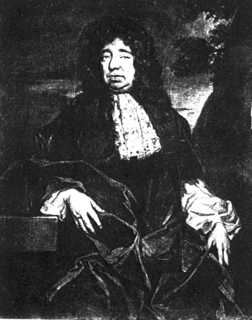
Earl of Shelburne is a title that has been created two times while the title of Baron Shelburne has been created three times. The Shelburne title was created for the first time in the Peerage of Ireland in 1688 when Elizabeth, Lady Petty, was made Baroness Shelburne. She was the wife of the noted economist Sir William Petty. The title was for life only and became extinct on her death in circa 1708. On the same day that Lady Shelburne was elevated to the peerage, her eldest son by Sir William Petty, Charles Petty, was also raised to the Peerage of Ireland as Baron Shelburne. He died young in 1696, when the title became extinct. The barony was created for a third time in the Peerage of Ireland in 1699 in favour of the Hon. Henry Petty, younger son of Sir William Petty and Lady Shelburne. In 1719 he was further honoured when he was made Viscount Dunkerron and Earl of Shelburne, also in the Peerage of Ireland. On his death in 1751 these titles also became extinct.
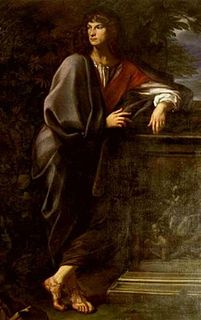
Earl of Sunderland is a title that has been created twice in the Peerage of England. The first creation came in 1627 in favour of Emanuel Scrope, 11th Baron Scrope of Bolton. The earldom became extinct on his death in 1630 while the barony became either extinct or dormant. The second creation came in 1643 in favour of the Royalist soldier Henry Spencer, 3rd Baron Spencer of Wormleighton. The Spencer family descended from Sir John Spencer who acquired the Wormleighton estate in Warwickshire and the Althorp estate in Northamptonshire. His grandson Sir John Spencer was a Knight of the Shire for Northamptonshire. The latter's grandson Sir Robert Spencer represented Brackley in Parliament in the late 16th century. In 1603 Sir Robert was raised to the Peerage of England as Baron Spencer of Wormleighton. He was succeeded by his eldest surviving son, William, the second Baron. He had previously represented Northamptonshire in Parliament. His eldest son was the aforementioned third Baron. In July 1643 he was created Earl of Sunderland in the Peerage of England. Lord Sunderland was killed at the Battle of Newbury in September of the same year. He was succeeded by his two-year-old only son, Robert, the second Earl. He later gained great distinction as a statesman and notably served four times as Secretary of State for the Southern Department.

Earl Stanhope was a title in the Peerage of Great Britain. The earldom was created in 1718 for Major General James Stanhope, a principal minister of King George I, with remainder to the heirs male of his body. He was the son of the Hon. Alexander Stanhope, fifth and youngest son of Philip Stanhope, 1st Earl of Chesterfield. In 1717, James Stanhope had been raised to the peerage as Viscount Stanhope, of Mahón in the Island of Minorca, and Baron Stanhope, of Elvaston in the County of Derby, with special remainder, failing heirs male of his body, to his second cousin John Stanhope of Elvaston and the heirs male of his body. These titles were also in the Peerage of Great Britain. The heir apparent of the Earls Stanhope used 'Viscount Mahon' as a courtesy title.

Earl of Peterborough was a title in the Peerage of England. It was created in 1628 for John Mordaunt, 5th Baron Mordaunt. He was succeeded by his eldest son, Henry, the second Earl. He was a soldier and courtier. Lord Peterborough had two daughters but no sons. He was succeeded in the barony of Mordaunt by his daughter, Mary, 7th Baroness. The earldom was passed on to his nephew, Charles Mordaunt, 1st Earl of Monmouth, who became the third Earl. He was a prominent soldier and politician. In 1705 he also succeeded his cousin Mary in the barony of Mordaunt. His eldest son John Mordaunt, Viscount Mordaunt, predeceased him, and Lord Peterborough was consequently succeeded by his grandson, Charles, the fourth Earl. The barony of Mordaunt, the viscountcy of Mordaunt and the earldoms of Peterborough and Monmouth, became extinct on the death of the latter's son, the fifth Earl, in 1814. The barony of Mordaunt was passed on to his half-sister, Lady Mary Anastasia Grace Mordaunt.
Philip Stanhope, 1st Earl of Chesterfield was an English nobleman, aristocrat and royalist, who was created the first Earl of Chesterfield by King Charles I in 1628.
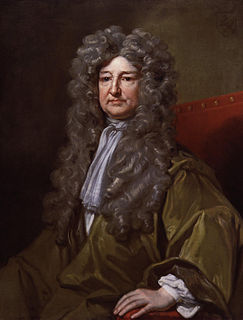
Earl of Carbery, in the County of Cork, was a title in the Peerage of Ireland. It was created on 5 August 1628 for the Welsh courtier and politician John Vaughan, 1st Baron Vaughan. He had already been created Baron Vaughan, of Mullingar in the County of Westmeath, on 13 July 1621, also in the Peerage of Ireland. He was succeeded by his son, Richard, the second Earl. He fought as a Royalist in the English Civil War. On 25 October 1643 Charles I created him Baron Vaughan, of Emlyn in the County of Carmarthen, in the Peerage of England, which entitled him to a seat in the English House of Lords. His eldest son Francis Vaughan, Lord Vaughan sat as Member of Parliament for Carmarthen but predeceased his father. Lord Carbery was therefore succeeded by his second son, John, the third Earl. He notably served as Governor of Jamaica between 1675 and 1678 and as President of the Royal Society between 1686 and 1689. He had no surviving male issue and the titles became extinct on his death in 1713.

Charles Hare Hemphill, 1st Baron Hemphill, PC QC, was an Irish politician and barrister.
Sir John Stanhope was an English knight and landowner, and father of Philip Stanhope, 1st Earl of Chesterfield.
Henry Stanhope, Lord Stanhope KB, known as Sir Henry Stanhope until 1628, was an English nobleman and politician.
Baron Wotton was a title that was created twice in the Peerage of England. The first creation came in 1603 for Sir Edward Wotton, of Boughton Place, Boughton Malherbe, Kent, a descendant of Nicholas Wotton, twice Lord Mayor of London, who married Joan Corbye, heiress of Boughton Malherbe and settled at Boughton Place. Edward, in 1594 followed several of his forebears as High Sheriff of Kent and served as Ambassador to Queen Elizabeth I. After the death of his son and heir, the second Baron, in 1630, without male issue, the barony became extinct. His estate passed to his eldest daughter Katherine, who firstly married Henry Stanhope, Lord Stanhope. She was created Countess of Chesterfield for life on his death and later married Jehan van Kerkhoven. The title was revived for her son by her second husband, Charles Henry, who also created Earl of Bellomont in 1680. For more information on the second creation, which became extinct in 1683, see Earl of Bellomont.
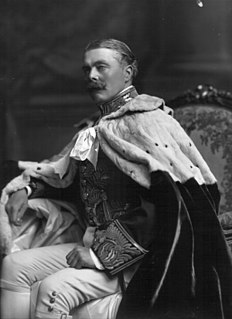
Herbert Colstoun Gardner, 1st Baron Burghclere, was a British Liberal politician who sat in the House of Commons from 1885 until he was raised to the peerage in 1895. He served as President of the Board of Agriculture between 1892 and 1895.
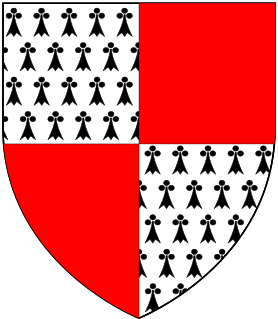
John Stanhope, 1st Baron Stanhope was an English courtier, politician and peer.
William Henry Leicester Stanhope, 11th Earl of Harrington, was a British army captain and peer.

Charles Wyndham Stanhope, 7th Earl of Harrington was an English peer.
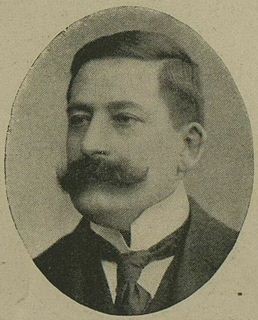
Fitzroy Hemphill, was a British baron and Liberal Party politician, the son of Charles Hare Hemphill, the first baron, and he succeeded his brother to the barony on 26 March 1918. Fitzroy was a barrister of the Middle Temple from 1899, served as a justice of the peace for County Galway. As well as politics he was a captain in 2nd battalion King's Own Scottish Borderers; a representative member of London's Territorial Force, Justice of the peace in Galway, Ireland; and 'Chevalier' of the Legion of Honour.